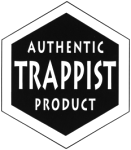

The Trappists constitute the Cistercian Order of the Strict Observance. This order was founded in 1098 and the name "Trappist" got its origin from the Abbey of Notre-Dame de la Trappe in Soligny (France).
There is no beer style called Trappist.
The term "Trappist Beer" is protected since 1932. During the 60s and after many abuses by so-called abbey breweries, the first legal actions were made to condemn the imposters. In 1997, eight Trappist abbeys founded the International Trappist Association (ITA) to prevent non-Trappist commercial companies from abusing the Trappist name. The logo "Authentic Trappist Product" was created at that time.
To use the name and the logo, the 3 rules of the International Trappist Association must be observed:
When I first published this page (~2006), those 3 rules sounded slightly different and were "tuned" meanwile, probably to allow the bigger members to keep their label. Here what they were:
Additionaly, the beer Mont des Cats from France is also considered as a Trappist beer, but the beer is still produced by Chimay.
Westmalle Westvleteren
Chimay Koningshoeven
Rochefort Orval
Mont des Cats
Stift Engelszell Spencer
De Kievit
Tre Fontane
Mount Saint Bernard

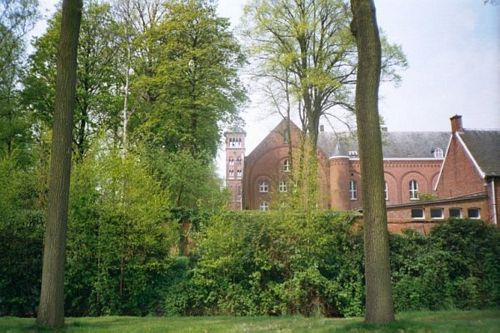 Abdij Trappisten van Westmalle, 2390 Malle, Belgium www.trappistwestmalle.be, production: 134'000 hl.
Abdij Trappisten van Westmalle, 2390 Malle, Belgium www.trappistwestmalle.be, production: 134'000 hl.
This brewery started to brew in 1836 and is the oldest Trappist. It is also behind Chimay and Koningshoven the 3rd biggest.
Westmalle invented the Dubbel and Tripel designations which are now commonly used by numerous breweries and not only in Belgium.
The brewery produces 2 beers, the Dubbel which makes up 40% of the production and the
Tripel (60%). They are also brewing a beer reserved for the monks, the Extra, which can only be found at the Café Trappisten, near the Abbey.
 Dubbel, 7%: dark brown colour, fine creamy head, complex aroma of malt, apple and caramel, full-bodied, moderately sweet with a dry and long
malty and slightly fruity finish.
Dubbel, 7%: dark brown colour, fine creamy head, complex aroma of malt, apple and caramel, full-bodied, moderately sweet with a dry and long
malty and slightly fruity finish.
my rating: 4.1 / Untappd: 3.71
 Tripel, 9-9.5%: cloudy pale orange colour, giant foamy head, strong hoppiness with notes of cream, bitter orange and anis, bready, oily and very
bitter, endless bitter and dry finish with reminiscence of bread and orange - the mother of all tripels remains -THE- reference.
Tripel, 9-9.5%: cloudy pale orange colour, giant foamy head, strong hoppiness with notes of cream, bitter orange and anis, bready, oily and very
bitter, endless bitter and dry finish with reminiscence of bread and orange - the mother of all tripels remains -THE- reference.
my rating: 4.7 / Untappd: 3.83
 Extra, 4.8-5.5%: is not commercialized and can only be found at the abbey. - cloudy orange colour with a giant foamy head, yeasty nose, grapefruit,
light- to medium-bodied, very creamy mouthfeel, robust bitterness, the finish is very dry with some earthy notes - thin-bodied but charming - a big
thank you to BierKönig for trading me this one !
Extra, 4.8-5.5%: is not commercialized and can only be found at the abbey. - cloudy orange colour with a giant foamy head, yeasty nose, grapefruit,
light- to medium-bodied, very creamy mouthfeel, robust bitterness, the finish is very dry with some earthy notes - thin-bodied but charming - a big
thank you to BierKönig for trading me this one !
my rating: 3.4 / Untappd: 3.47

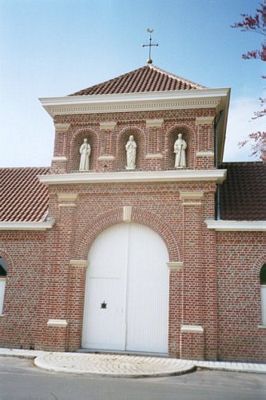 Abdij Sint-Sixtus, 8640 Westvleteren, Belgium www.sintsixtus.be, production: 6'265 hl.
Abdij Sint-Sixtus, 8640 Westvleteren, Belgium www.sintsixtus.be, production: 6'265 hl.
Westvleteren has one of the smallest output of the Trappist breweries. Despite an always increasing demand for their fantastic beers, they don't want to
produce more and that is very good so, especially if you consider what happened to Chimay and Koningshoeven. Basically, you have to go to the Abbey
or the Café In de Vrede to buy their beers.
The Abbey has been brewing beers since 1839. Between 1946 and 1992, the brewery Sint-Bernardus in Watou was allowed to brew their beers under licence.
Their Sint-Sixtus Abt, at 12%, was my first encounter with beers from Westvleteren, back in 1987. I did not like it at all then, maybe because I was
unexperienced but also certainly because I had 8 strong belgian beers before it ...
Westvleteren is actually producing 3 marvellous beers: the Blond (green cap), since 1999, which then replaced the 6 Special
(red cap, 6.2%) and the 4 Double (green cap, 3.5%); the Extra 8 (blue cap) and the Abt 12 (yellow cap). The alcohol % of
this last beer was recently reduced from 10.8 to 10.2.
 6 Special (red cap), 6.2%: discontinued - I had it in Bruxelles, back in 1987. This was very probably the version from Sint-Bernardus (which was allowed
to brew the Westvleteren beers under licence between 1946 and 1992. Unfortunately, I was then taking no notes, but just rating ...
6 Special (red cap), 6.2%: discontinued - I had it in Bruxelles, back in 1987. This was very probably the version from Sint-Bernardus (which was allowed
to brew the Westvleteren beers under licence between 1946 and 1992. Unfortunately, I was then taking no notes, but just rating ...
my rating: 4.0 / Untappd: 4.11
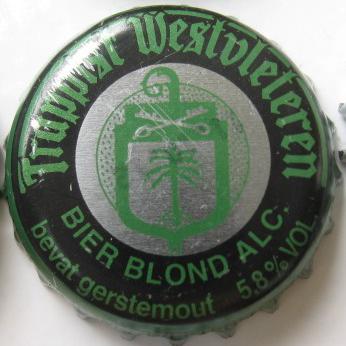 Blond (green cap), 5.8%: cloudy dark orange colour, big creamy head and a beautiful lacing, citrusy, estery nose with notes of cream, fresh,
medium-bodied, slightly oily with a solid bitterness, the finish is dry with a moderate maltiness and a fruity hoppiness - very balanced and very well made.
Blond (green cap), 5.8%: cloudy dark orange colour, big creamy head and a beautiful lacing, citrusy, estery nose with notes of cream, fresh,
medium-bodied, slightly oily with a solid bitterness, the finish is dry with a moderate maltiness and a fruity hoppiness - very balanced and very well made.
my rating: 3.8 / Untappd: 4.06
 Extra 8 (blue cap), 8%: dark brown colour, nice creamy head and a wonderful lacing, gingerbread and chocolaty aroma, notes of raisins, sweet,
very creamy and malty, robust bitterness, very long dry aftertaste of bread, malt, dried fruits and warming alcohol - incredibly complex and deeply balanced.
Extra 8 (blue cap), 8%: dark brown colour, nice creamy head and a wonderful lacing, gingerbread and chocolaty aroma, notes of raisins, sweet,
very creamy and malty, robust bitterness, very long dry aftertaste of bread, malt, dried fruits and warming alcohol - incredibly complex and deeply balanced.
my rating: 4.7 / Untappd: 4.25
 Abt 12 (yellow cap), 10.2%: dark brown colour with a fine head, very complex aroma: bread, raisins and black chocolate, impressive malty palate,
deep balance between sweetness and bitterness, slightly oily, the finish is moderately dry showing candy sugar, plums, gingerbread and a long warming
alcohol touch - my deep consideration goes to the monks who are brewing this wonder and who make me think for a moment that I'm living in paradise.
Abt 12 (yellow cap), 10.2%: dark brown colour with a fine head, very complex aroma: bread, raisins and black chocolate, impressive malty palate,
deep balance between sweetness and bitterness, slightly oily, the finish is moderately dry showing candy sugar, plums, gingerbread and a long warming
alcohol touch - my deep consideration goes to the monks who are brewing this wonder and who make me think for a moment that I'm living in paradise.
my rating: 4.8 / Untappd: 4.52

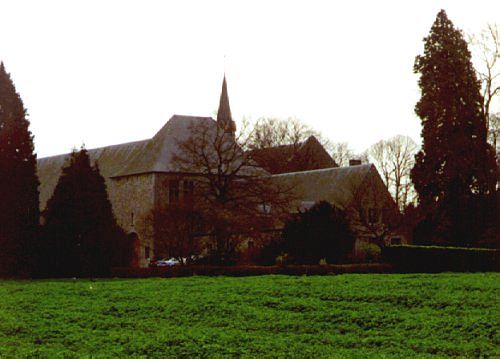 Abbaye Notre-Dame de Scourmont, 6464 Forges, Belgium www.chimay.be, production: 185'000 hl.
Abbaye Notre-Dame de Scourmont, 6464 Forges, Belgium www.chimay.be, production: 185'000 hl.
Chimay started to brew back in 1863 and is nowadays the biggest Trappist brewery. They were long selling 3 beers and brewing a fourth (Dorée (Refterbier)) reserved to
the monks' consumption and which can only be found at the Auberge de Poteaupré, near the abbey. The Chimay Rouge also called Première when sold in 75cl bottles
was started in 1948 as an Easter beer. The Bleue (or Grande Réserve in 75cl bottles) came out the same year as Spéciale Noël.
The Blanche also called Cinq Cents when sold in big bottles or sometimes Triple was first brewed in 1966.
In 2012, to celebrate the 150 years spent at the Abbey Of Scourmont,
a beer called 150 or Speciale Cent Cinquante has been brewed specially for this occasion. Then, since 2015 diverse barrel-aged versions of the Grande Réserve are brewed.
There was a controversy about the quality of the Chimay products which is considered by some people (like author Tim Webb) to have dropped down in the late ninetees.
The brewer admits in 2001 to use wheat flour (wheat starch according to the labels but it appears to be a translation mistake)
and hop extracts (100%) but affirms that their recipes have not changed since 1969. This is hard to believe and I personally consider that their beers
are now far away of what they were once.
 Blanche (Cinq Cents/Triple), 8%: 1999 vintage sampled 12/2007 - hazy deep and dark orange colour; big and creamy pale beige head leaving a nice lace;
solidly bready nose with hints of apples and grapefruit below; very creamy mouthfeel, sweet and with a low carbonation; aftertaste of bitter almonds, honey and bread;
quite dry and long lasting - subtle and charming (3.9)
Blanche (Cinq Cents/Triple), 8%: 1999 vintage sampled 12/2007 - hazy deep and dark orange colour; big and creamy pale beige head leaving a nice lace;
solidly bready nose with hints of apples and grapefruit below; very creamy mouthfeel, sweet and with a low carbonation; aftertaste of bitter almonds, honey and bread;
quite dry and long lasting - subtle and charming (3.9)
cloudy dark orange colour with a giant foamy head and a beautiful lacing, esters and honey in the nose, notes of gingerbread, creamy mouthfeel, lot of carbonation,
robust and quite agressive bitterness, long and dry aftertaste of bitter orange.
my rating: 3.5 / Untappd: 3.75
 Bleue (Grande Réserve), 9%: brown in colour, little foam, malt and caramel aroma with hints of plum, slightly overcarbonated, bubblegum-like
mouthfeel, some sweetness followed by a tart bitterness with a synthetic malty finish - it's hard to imagine that this was once a true world classic.
Bleue (Grande Réserve), 9%: brown in colour, little foam, malt and caramel aroma with hints of plum, slightly overcarbonated, bubblegum-like
mouthfeel, some sweetness followed by a tart bitterness with a synthetic malty finish - it's hard to imagine that this was once a true world classic.
my rating: 3.6 / Untappd: 3.92
 Rouge (Première), 7%: cloudy reddish-brown colour with a big creamy head, malt and hay aroma with notes of banana, creamy mouthfeel, medium-bodied,
oily with a touch of acidity, slightly overcarbonated, dry and moderately malty finish - unremarkable; this is just the shadow of what it was before.
Rouge (Première), 7%: cloudy reddish-brown colour with a big creamy head, malt and hay aroma with notes of banana, creamy mouthfeel, medium-bodied,
oily with a touch of acidity, slightly overcarbonated, dry and moderately malty finish - unremarkable; this is just the shadow of what it was before.
my rating: 2.7 / Untappd: 3.75
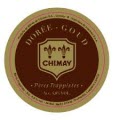 Dorée (Refterbier), 4.8%: originally not commercialized and only to be found at the abbey, nowadays pretty widely available - cloudy dark orange colur with a big dense creamy head, the
nose is citrusy and honeyish, slightly yeasty, creamy mouthfeel, lot of carbonation, medium-bodied, tart biterness, dry short finish - fresh and easy
but better than the actual Bleue and Rouge - thanks to Jeppe (BierKönig) for this rare beer !
Dorée (Refterbier), 4.8%: originally not commercialized and only to be found at the abbey, nowadays pretty widely available - cloudy dark orange colur with a big dense creamy head, the
nose is citrusy and honeyish, slightly yeasty, creamy mouthfeel, lot of carbonation, medium-bodied, tart biterness, dry short finish - fresh and easy
but better than the actual Bleue and Rouge - thanks to Jeppe (BierKönig) for this rare beer !
my rating: 3.2 / Untappd: 3.56
 150 (Speciale Cent Cinquante), 10%: from Amstein - pours a cloudy orange beer under a modest white foam left; estery and slightly yeasty aroma;
very fruity (apples and grapefruit) with notes of candi sugar; highly carbonated; full-bodied and fairly tasty, pretty sweet and with almost no bitterness;
gently acidic and with a long fruity finish with residual sweetness - too sweet and too belgian-like to be really great but definitely the first enjoyable
Chimay I had since 20 years
150 (Speciale Cent Cinquante), 10%: from Amstein - pours a cloudy orange beer under a modest white foam left; estery and slightly yeasty aroma;
very fruity (apples and grapefruit) with notes of candi sugar; highly carbonated; full-bodied and fairly tasty, pretty sweet and with almost no bitterness;
gently acidic and with a long fruity finish with residual sweetness - too sweet and too belgian-like to be really great but definitely the first enjoyable
Chimay I had since 20 years
my rating: 3.7 / Untappd: 3.74
 Grande Reserve Fermentée en Barriques - Chêne francais Chêne américain - 02/2019, 10.5%
Grande Reserve Fermentée en Barriques - Chêne francais Chêne américain - 02/2019, 10.5%
my rating: 4.0 / Untappd: 4.12

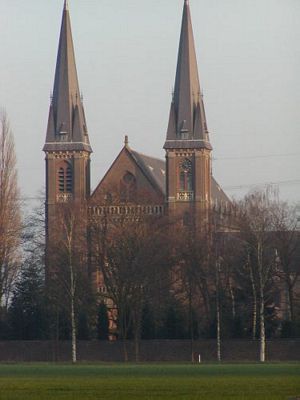 Abdij van Koningshoeven, 5056 Berkel-Enschot, Netherlands www.latrappe.nl, production: 145'000 hl.
Abdij van Koningshoeven, 5056 Berkel-Enschot, Netherlands www.latrappe.nl, production: 145'000 hl.
The brewery, originally called Bernardiner Bräu, opened back in 1886. The name was changed 5 years later in De Schaapskooi.
In 1969 the monks, who were no
more able to assume the production alone, made a 10 years contract with the belgian brewer Artois. The end of this contract and the revived interest for
the traditional Trappist styles of brewing brought the monastic involvement back in 1980. It was then that the well-known beers La Trappe came out.
Unfortunately, the monks, seeing their community being reduced constantly, decided to leave their brewery between the hands of Bavaria in 1999. Following
that, the right to use the "Authentic Trappist Product" logo was withdrawn. On October 7th 2005 the International Trappist Association granted again to
the la Trappe beers the right to use the logo.
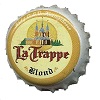 la Trappe Blond, 6.5%: cloudy dark orange colour, nice head and beautiful lace, yeasty and spicy, smooth, lot of carbonation, tart with some
bitterness, bubble-gum-like finish - artificial
la Trappe Blond, 6.5%: cloudy dark orange colour, nice head and beautiful lace, yeasty and spicy, smooth, lot of carbonation, tart with some
bitterness, bubble-gum-like finish - artificial
my rating: 3.1 / Untappd: 3.67
 la Trappe Bockbier, 7%: fully cloudy dark copper-red colour with a little beige foam left; nice lace; aroma of
apples and caramel with notes of chocolate; medium- to full-bodied, sweet and with a quite harsh palate (use of wheat starch?), a light bitterness and an
earthy malty and caramelish finish - unrefined and not much quality out there, deeply forgettable
la Trappe Bockbier, 7%: fully cloudy dark copper-red colour with a little beige foam left; nice lace; aroma of
apples and caramel with notes of chocolate; medium- to full-bodied, sweet and with a quite harsh palate (use of wheat starch?), a light bitterness and an
earthy malty and caramelish finish - unrefined and not much quality out there, deeply forgettable
my rating: 2.6 / Untappd: 3.52
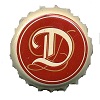 la Trappe Dubbel (also called Dominus Dubbel), 6.5%: cloudy dark brown colour, fine head and a nice lacing, malt and yeast aroma with stong
notes of raspberry bubblegum (typical of the recent La Trappe products), tart and sweet, very creamy mouthfeel, the finish is dry and malty with a
quite unpleasant bubblegum feeling - this brewery does not deserve to be called trappist anymore
la Trappe Dubbel (also called Dominus Dubbel), 6.5%: cloudy dark brown colour, fine head and a nice lacing, malt and yeast aroma with stong
notes of raspberry bubblegum (typical of the recent La Trappe products), tart and sweet, very creamy mouthfeel, the finish is dry and malty with a
quite unpleasant bubblegum feeling - this brewery does not deserve to be called trappist anymore
my rating: 2.5 / Untappd: 3.65
 la Trappe Isid'Or, 7.5%: brewed to commemorate the 125 anniversary of the brewery and named after brother Isidorus, the first brewer of brewery "de Koningshoeven". from Mise en Bière, Lausanne - pours a hazy dark amber beer with a persistent and creamy beige head; aroma of caramel and nougat with some yeasty notes and hints of banana; velvety palate and a good malt backbone, some sweetness and a late earthy bitterness; creamy caramelish aftertaste with more notes of yeast and honey
la Trappe Isid'Or, 7.5%: brewed to commemorate the 125 anniversary of the brewery and named after brother Isidorus, the first brewer of brewery "de Koningshoeven". from Mise en Bière, Lausanne - pours a hazy dark amber beer with a persistent and creamy beige head; aroma of caramel and nougat with some yeasty notes and hints of banana; velvety palate and a good malt backbone, some sweetness and a late earthy bitterness; creamy caramelish aftertaste with more notes of yeast and honey
my rating: 3.7 / Untappd: 3.77
 la Trappe Tripel (also called Dominus Tripel), 8%: slightly hazy red-amber colour, few foam, candy sugar, perfumy with notes of red fruits,
a bit plastic like, full-bodied with a bitter spicy alcohol finish - artificial; by far no more what it was in the past
la Trappe Tripel (also called Dominus Tripel), 8%: slightly hazy red-amber colour, few foam, candy sugar, perfumy with notes of red fruits,
a bit plastic like, full-bodied with a bitter spicy alcohol finish - artificial; by far no more what it was in the past
my rating: 2.9 / Untappd: 3.76
 la Trappe Quadrupel, 10%: reddish in colour, big head, fruity aroma (apple), full-bodied, strong alcohol presence, plum, lack of complexity
la Trappe Quadrupel, 10%: reddish in colour, big head, fruity aroma (apple), full-bodied, strong alcohol presence, plum, lack of complexity
my rating: 3.6 / Untappd: 3.94
 La Trappe Witte Trappist, 5%: hazy blond colour, very foamy head, very wheaty and banana aroma, oily with a good malt body, tart acidity and a long corny and vanilla finish - very drinkable (for me a cross between a german weizen and a witbier)
La Trappe Witte Trappist, 5%: hazy blond colour, very foamy head, very wheaty and banana aroma, oily with a good malt body, tart acidity and a long corny and vanilla finish - very drinkable (for me a cross between a german weizen and a witbier)
my rating: 3.5 / Untappd: 3.61
 La Trappe Puur, 4.5-4.7%: from Au Grain d'Orge, Neuchâtel - slightly hazy golden blond beer with a firm long lasting white foam; a fresh hoppy aroma with notes of citrus, hay, vanilla and some undefined herbs; medium-bodied and with a rounded palate; pretty bitter and with a long herbal and citrusy hoppy finish - clearly the best of the la Trappe beers
La Trappe Puur, 4.5-4.7%: from Au Grain d'Orge, Neuchâtel - slightly hazy golden blond beer with a firm long lasting white foam; a fresh hoppy aroma with notes of citrus, hay, vanilla and some undefined herbs; medium-bodied and with a rounded palate; pretty bitter and with a long herbal and citrusy hoppy finish - clearly the best of the la Trappe beers
my rating: 3.9 / Untappd: 3.32

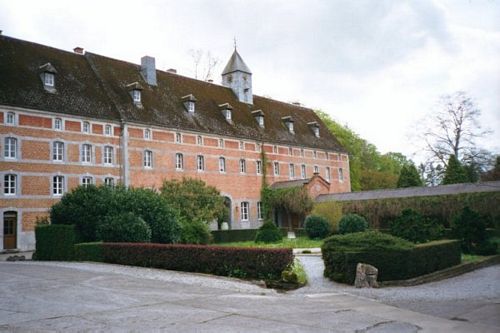 Abbaye Notre-Dame de Saint-Remy, 5580 Rochefort, Belgium www.abbaye-rochefort.be, production: 52'000 hl.
Abbaye Notre-Dame de Saint-Remy, 5580 Rochefort, Belgium www.abbaye-rochefort.be, production: 52'000 hl.
The monks of Rochefort have been brewing beers since 1899. They long produced 3 beers. The 6 originally called Middel (which is only brewed
once or twice a year), was started in 1953 and accounts for 10% of the production. The 10, originally known as Merveille was started the same
year of 1953 and makes up 30% of the actual production. The 8 or Spécial was first brewed in 1955 and is today the major product with 60%.
In 2020, a new beer appeared, the Triple Extra, finally completing the classical Dubbel-Tripel-Quadrupel portfolio.

6, 7.5%: dark brown colour, big creamy and slightly brown-tainted head, beautiful lacing, malt and chocolate aroma, notes of cocoa, sweet and
smooth, moderate bitterness and a biscuity maltiness in the finish - the worthy little brother of the 10
my rating: 3.8 / Untapp: 3.73

8, 9.3%: dark reddish-brown colour with a big dense and creamy head, aroma of prune, chocolate, nougat and burnt almond, very malty, lot of
carbonation, robust bitterness with a long malty and plumy finish - powerful and balanced
my rating: 4.0 / Untappd: 3.87

10, 11.3%: november 2009 - I got forced by Laurent Mousson to re-rate it and must admit that either my taste changed during the last 6 years
(well it has changed definitely, the only question being how much) or this brew is not at its best anymore. In any cases, I have not been able to find all
of its complexity in the nose anymore and had to deplore a light metallic touch in the finish. But it.s still a great beer anyway.
february 2004 - cloudy dark-brown colour, fine persistant creamy head with a nice lacing, deeply complex aroma of plums, nougat, nuts, alcohol and
chocolate, full-bodied, oily with a strong bitterness, the finish is explosive showing tons of malt, warming alcohol and licorice - this brew is just marvellous
and if I had to choose only one beer, it would be this one (4.9)
my rating: 4.1 / Untappd: 4.08

Triple Extra, 8.1%
my rating: N/A / Untappd: 3.78

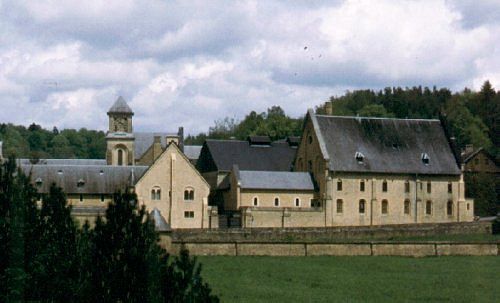 Abbaye Notre-Dame d'Orval, 6823 Villers-devant-Orval, Belgium www.orval.be, production: 78'200 hl.
Abbaye Notre-Dame d'Orval, 6823 Villers-devant-Orval, Belgium www.orval.be, production: 78'200 hl.
It seems that beer has been brewed in Orval since as early as the 13th century. The monastery was destroyed after the French revolution in 1793. It was reconstructed in 1926 and the new brewery started in 1932. But the beer has only been considered as a trappist product since 1980. Two beers are brewed in Orval: one is being commercialized under the name of Orval (having a blue label) and the second one is being brewed primarily for the monks. This last beer, called petite Orval or Orval verte (because of its green label) can only be found at l'Ange Gardien besides the abbey.

Orval, 6.2%: fantastic foamy head, orange coloured, strong and complex hoppy nose showing notes of orange peels, perfume, peanuts, vinegar and
cream, smooth and slightly oily with a powerful finishing bitterness, very long aftertaste of bitter orange and cream - this beer is a legend.
my rating: 4.5 / Untappd: 3.71
petite Orval, 3%-4.2%: Red-orange colour with a fine head and a marvellous lace, the aroma is typically Orval: citrusy, spicy, hoppy nose with
notes of caramel; smooth, thin body with only a light bitterness, short watery finish - a watered-down version of the Great Orval - a big thank you to
Nicolas Jeckelman for this rare stuff.
my rating: 3.3 / Untappd: 3.92

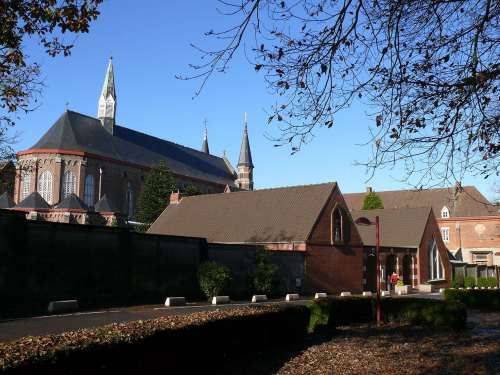 Abbaye du Mont des Cats, 59270 Godewaersvelde, France www.abbaye-montdescats.fr.
Abbaye du Mont des Cats, 59270 Godewaersvelde, France www.abbaye-montdescats.fr.
Since June 2011 the French abbey of Sainte Marie du Mont des Cats, located in the French Flanders and founded in 1826, has been selling a Trappist beer which is produced by the Chimay brewery. This abbey does not plan to build its own brewery in a near future but has not excluded this possibility neither.

Mont des Cats, 7.6%
my rating: 3.2 / Untappd: 3.54

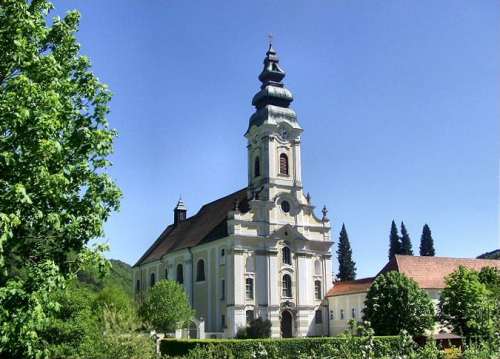 Stiftstraße 6, 4090 Engelhartszell, Austria www.stift-engelszell.at, production: 2'000 hl.
Stiftstraße 6, 4090 Engelhartszell, Austria www.stift-engelszell.at, production: 2'000 hl.
In May 2012, Engelszell became at that time the 8th approved producer of Trappist beer and only the second outside Belgium. Producing on a modern 15 hl brewhouse, the brewery offers mainly 4 beers.
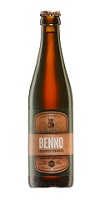
Benno, 6.9%: from Erzbierschof - dark amber-orange beer with a little beige foam left; aroma of ashtray with red fruits and honey in the background; a subtle but fair carbonation and a fair earthy bitterness, some chewy malts and quite dry finish, more woody and smokey, spicy notes - some originality
my rating: 3.7 / Untappd: 3.48

Nivard, 5.5%: from Erzbierschof - pours a hazy dark blond beer with a persistent white foam, nice lace; aroma of wood, dried fruits (dates); medium-bodied, grainy and earthy bitterness; long finish of dried fruits and spicy hops
my rating: 3.7 / Untappd: 3.41

Gregorious, 9.7-10.5%: courtesy of Toni Flükiger - slightly hazy dark brown beer with a poor head retention; estery and perfumy with malty notes and hints of nougat and blood; full-bodied and pretty sweet; light residual sweetness in the finish with notes of prunes, caramel, esters and a warming alcohol kick; slightly spicy
my rating: 3.6 / Untappd: 3.62

Weisse, 4.9%
my rating: N/A / Untappd: 3.33

 CLOSED in 2022
CLOSED in 2022
St. Joseph's Abbey, Spencer, Massachusetts, USA www.spencerbrewery.com, production: 4'700 hl.
Since December 2013 the Spencer brewery is producing beers in the St. Joseph's Abbey and became the first brewery outside Europe to be granted the Authentic Trappist logo
Besides the beers listed below, Spencer produces also seasonal and one-shots like Pumpkin beer, Farmhouse Saison, Pilsner, Witbier and others.

Spencer Trappist Ale, 6.5%: courtesy of Thomas Schneider - cloudy dark orange beer with a moderate foam left; bready, yeasty and light fruity; full-bodied, sweet and quite fairly carbonated; bready and fruity finish with some residual sweetness
my rating: 3.7 / Untappd: 3.67
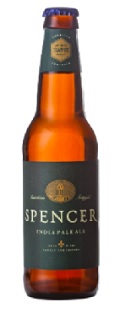
Spencer Trappist IPA, 7.2%: @le Trappiste, Le Havre - cloudy orange beer with a long lasting foam; aroma of esters, orange and spices, gently perfumy; full-bodied; sweet and fizzy, some bitterness, sharp spicyness and fruity fizzy finish - you'll need some flexibility to see an ipa in this belgian strong ale
my rating: 3.4 / Untappd: 3.52
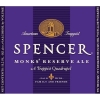
Spencer Monk's Reserve, 10.2%
my rating: N/A / Untappd: 3.84
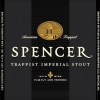
Spencer Imperial Stout, 8.7%
my rating: N/A / Untappd: 3.79
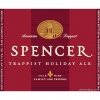
Spencer Holiday Ale, 9%
my rating: N/A / Untappd: 3.69
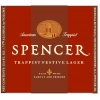
Spencer Festive Lager, 7.5%: has been discontinued
my rating: 3.8 / Untappd: 3.63

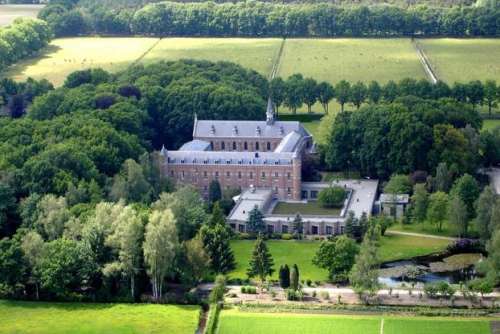 Abdij Maria Toevlucht, Rucphenseweg 38, 4882 KC Zundert, Netherlands www.abdijmariatoevlucht.nl/en, production: 5'000 hl.
Abdij Maria Toevlucht, Rucphenseweg 38, 4882 KC Zundert, Netherlands www.abdijmariatoevlucht.nl/en, production: 5'000 hl.
In December 2013, the brewery De Kievit, part of the abbey Maria Toevlucht, started to brew Trappist beers. It was at that time the 3rd recognized Trappist brewery in the Netherlands.
They started by producing one beer - Zundert 8, a Tripel - and then a second one - Zundert 10, a Quadrupel - in 2018.
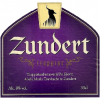
8, 8%: courtesy of Toni - quite clear bronze beer with a poor foam left; red fruits marmalade and esters in the nose; full-bodied, pretty tart and lively, some bitterness and decently dry; estery fruity hoppiness, marmalade-like
my rating: 3.8 / Untappd: 3.67
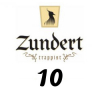
10, 10%: from Amstein - pours a dark brown beer under a firm beige foam; aroma of figs and molasses, prunes and pears; fairly sweet, solid carbonation, thick, rich; long fizzy finish of dates, prunes and honey, quite lot of residual sugars
my rating: 3.9 / Untappd: 3.74

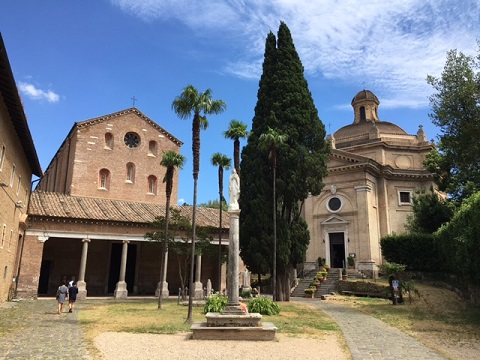 Tre Fontane abbey, Via di Acque Salvie, Rome, Italy www.abbaziatrefontane.it, production: 2'000 hl.
Tre Fontane abbey, Via di Acque Salvie, Rome, Italy www.abbaziatrefontane.it, production: 2'000 hl.
In May 2015, Tre Fontane - also called the Abbey of Saints Vincent and Anastasius - became the eleventh Trappist monastery to produce and sell Trappist beer.
They produce two core beers - a Tripel and a Belgian Blond - as well as some rare seasonals.

Triple, 8.5%: from Erzbierschof - hazy amber-orange beer with a poor head retention; aroma of candied fruits and candy sugar; estery; full-bodied, sweet and very carbonated; chewy aftertaste of oranges marmalade and lot of residual sugars
my rating: 3.2 / Untappd: 3.59

Scala Colei, 6.7%
my rating: N/A / Untappd: 3.45

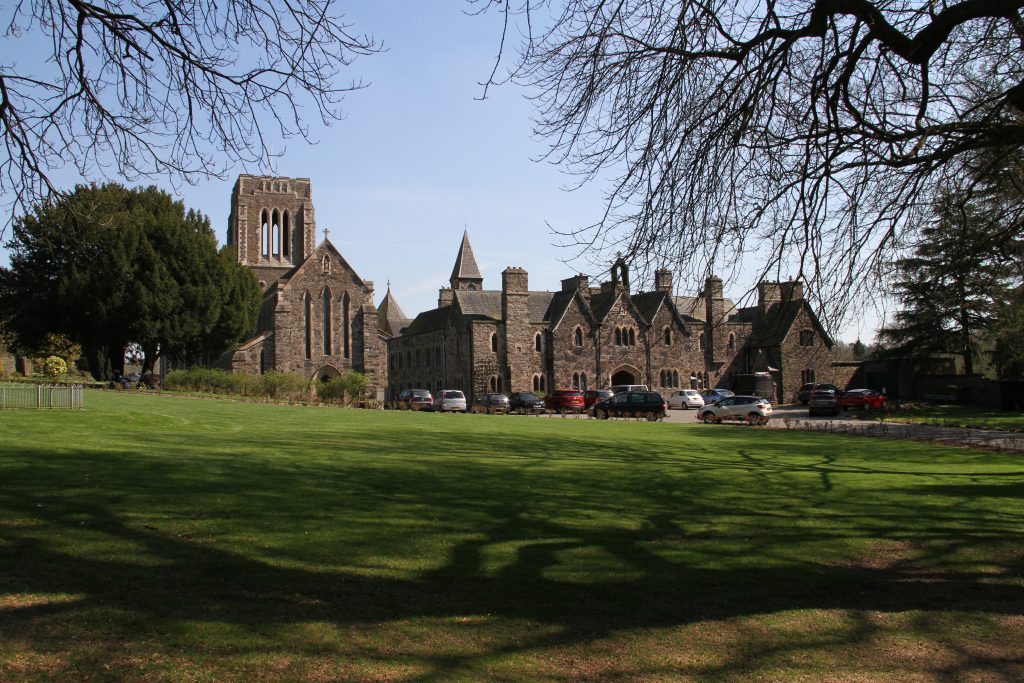 Mount Saint Bernard Abbey, Oaks Rd, Coalville LE67 5UL, England www.mountsaintbernard.org, production: 2'000 hl.
Mount Saint Bernard Abbey, Oaks Rd, Coalville LE67 5UL, England www.mountsaintbernard.org, production: 2'000 hl.
Founded in 1835 in the parish of Whitwick, the abbey was the first permanent monastery to be founded in England since the Reformation and is the sole Trappist house in England. In June 2018, the Abbey became the first in the UK to brew Trappist beer.
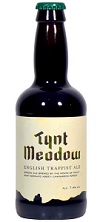
Tynt Meadow, 7.4%
my rating: N/A / Untappd: 3.66
breweries pictures are from Brewpics.cambrinus.nl and Wikipedia.org
Bov, updated